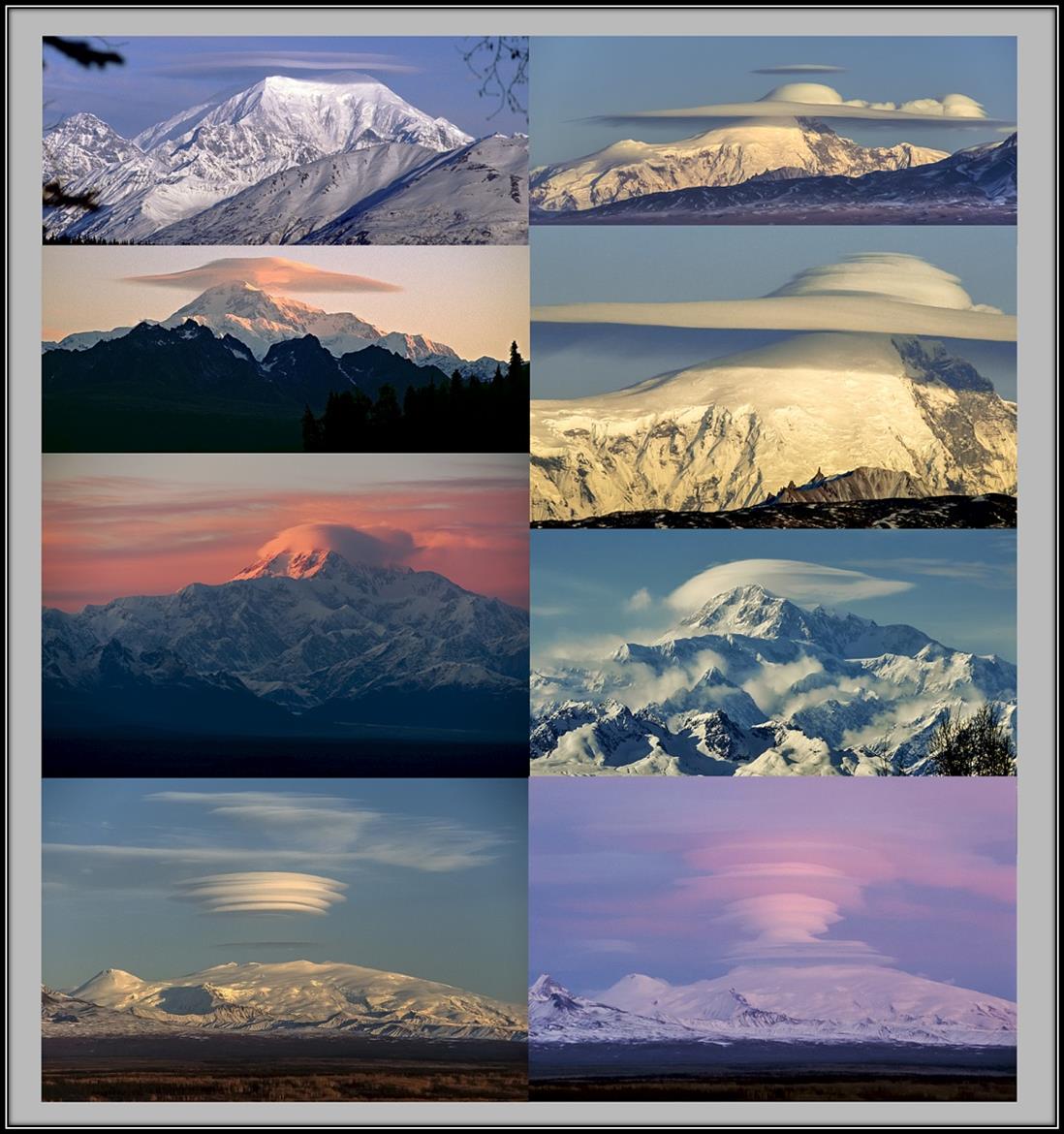
Lenticular Clouds
Lenticular clouds are amazing high altitude tropospheric "lens-shaped" cloud formations occurring as high as 40,000 feet. They indicate a disruption in the upper air mass. Mountain peaks are the perfect obstruction as air flows over the surface of the Earth, causing disruptions and areas of moderate to severe turbulence in which aircraft pilots gladly avoid.
Lenticular clouds appear as large-scale standing waves, also called "wave clouds" or "mountain waves." They form on one end and dissipate on the opposite end. Their shapes and lengths constantly change and while they do appear to remain stationary and calm in appearance, they are dangerous nonetheless.
A feat to note: Glider Pilots do seek the rising air mass (wave lift), associated with these types of clouds, which is often strong and smooth, allowing gliders to reach great heights and distances. Gliding world records were achieved in 2016 in both categories by reaching an altitude of 50, 721 feet and a gliding distance of 1,864 miles.
Due to the many mountain ranges in Alaska, air masses collide with the great peaks in these ranges and lenticular clouds form quite often as the weather changes.
First row: In the Alaska Range, Mt. Foraker at 17,400 feet rakes the troposphere forming a couple miles-long double stack of lenticulars. In the Wrangell-Saint Elias Range, Mt. Sanford at 16,237 feet creates one of the most unusual and longest lenticular cloud formations I have witnessed. (Close-up view below it.)
Second row: Denali at 20,320 feet is well-known for its lenticular cloud formations throughout the seasons, as it is the first to obstruct the flow of the air mass at almost four miles high. This close-up view of the rare formation above Mt. Sanford shows the feathering at the outer-edges underneath the structure.
Third row: Denali summit is "capped" during an autumn sunset as a storm front arrives. Denali summit shows underneath this lenticular during this winter scene and notable are the lower peaks and ridges being raked by high winds as well.
Fourth row: The amazing "Stack of Plates" formation hovers over 14,163 foot Wrangell Volcano, remaining compressed most of the day. But by sunset, the Stack of Plates grew in place, perhaps caused by temperature variations in the troposphere, then began expanding well above 30,000 feet in height.
All images © Dave Parkhurst www.TheAlaskaCollection.com



